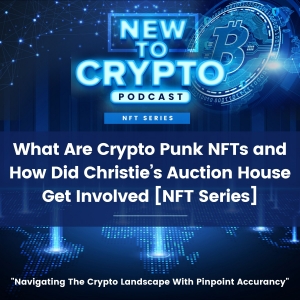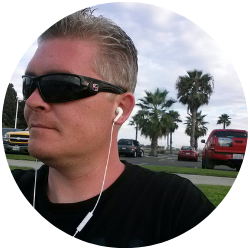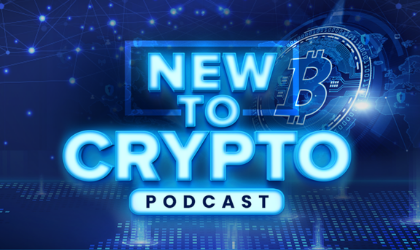0:00
Welcome to the New To Crypto podcast designed to guide you through the crypto landscape with pinpoint accuracy created for the new and intermediate crypto investor. Join your host Crypto Travels Michael as he takes you through the different facets of getting started and succeeding in your crypto journey. New to crypto podcast brings you new episodes daily Monday through Friday with surprise bonus episodes sometimes on the weekend. Let me ask you, are you new to crypto don’t know where to start? Are you more experienced but have questions? Then you’re in the right place. This podcast is designed for you, coming at you from the training center in the lifestyle design studio. Here’s your host Crypto Travels Michael.
Welcome to today’s podcast. I’ll tell you we’ve been downloaded and heard in 121 countries around the world. So I truly thank you for being part of this awesome community. And right now everything has been sizzling hot on Solana. With their event in their conference has been going on in Portugal. Today I’m going to talk about an awesome project which has become very popular in the Solana ecosystem. And it’s all about Raydium. Raydium, the evolution of DeFi on Solana and this is the first one that I’m doing in the Solana series. So let’s dive into what is Raydium. Raydium is an automated market maker AMM, and liquidity provider based on the Solana blockchain. Raydium leverages the central order book of the Serum decentralized exchange, the Serum dex, to enable lightning fast trades, shared liquidity, and new features for earning yields. Definitely listen to my episode all about Serum if you have not. Okay, back to Raydium. This protocol acts as a bridge for projects looking to expand into Solana and Serum. And in the process, Raydium an the RAY token will become the foundation to enable further development with partners. In the long term, Raydium aims to capture and maintain a leadership position among AMMs and liquidity providers in Serum, while leveraging the power of Solana.
So let’s break down some benefits and features. So basically Raydium is on Solana, and you benefit from the Solana to speed. So it enables faster transactions, significantly lower fees and improved scalability. Solana was chosen as the underlying blockchain to enable low-cost high-speed transactions. It is a high-performance permissionless blockchain-based with proof of history, and currently it handles 65,000 transactions per second with block times of 400 milliseconds. So the protocol is designed to scale together hardware and bandwidth improvements and capacity is expected to double every two years. Definitely listen to my episode all about Solana if you have not. So Raydium offers DeFi and AMMs projects a clear path to bridge platforms and liquidity.
With the high capabilities of Solana and Serum, Raydium will be integrated into project Serum, which is a dex that supports trustless cross-chain trading. Despite being natively implemented in Solana, it will be interoperable with Ethereum through the Wormhole bridge, and liquidity throughout the entire ecosystem. Unlike other AMMs, Raydium provides on-chain liquidity to a central limit order book, which means that groups have access to all order flow and liquidity in Serum. Raydium’s order book shows the bid and asks prices available among market participants. They give market participants the ability to express the amount of tokens they are willing to trade at any price through the power of Serum. Raydium returns the order books to the AMMs while the exchange itself is decentralized, the order books are centralized at Serum. This means that orders submitted to the order book by Raydium can be processed by anyone at Serum or vice versa. This is different from other AMMs that lack an order book to aggregate between liquidity pools. Raydium leverages the existing Serum order flow and supplies the liquidity in its own pools, benefiting the entire ecosystem.
So let’s break down the market maker. This is a fundamental feature of Raydium. All tokens are cumulated in its liquidity pools are needed to place orders in the order book accordingly to the invariant constant of the product. The tokens are locked to create a series of orders at different prices and sizes to provide liquidity. So let’s break down the Coin Swaps. For users who do not require the order book but enjoy cheap gas and low trading fees, Raydium has implemented this feature for users who just want to trade their tokens. While this is a standard feature available on other AMM platforms, the speed and the efficiency at which is executed will save significant costs for traders. For liquidity providers who frequently reallocate their assets to different pools the cost savings of swapping tokens will be significant, allowing more opportunities to leverage the performance on Raydium. Let’s break down Farming for a moment.
Liquidity providers can generate additional rewards for contributing. Key pools are incentivized with RAY tokens. The Raydium community governs the pools that receive farm rewards. For certain pools, decided by the Raydium community, these tokens can be farmed to return additional Raydium as rewards. In addition to this, projects can sponsor certain groups by adding tokens to a reward pool to further incentivize users. This helps new projects in two ways: users are more incentivized to hold project tokens and receive additional rewards while providing greater liquidity for these projects. Let’s break down what Accelerator is. It’s an initiative by Raydium to spearhead the growth of the Solana ecosystem. It serves as a launchpad for the latest projects to raise capital and drive initial liquidity in a decentralized and interoperable way, while allowing both project and Raydium communities to participate in carefully selected and well-vetted token offerings. And let’s break down what Bonsai is for a moment. Bonsai is Raydium’s official partnership with SushiSwap to allow Sushi to expand its reach and community to Solana, Serum, and Raydium.
Bonsai allows Sushi to branch out to native Solana assets through a new page in the SushiSwap UI called Bonsai. And connecting to the Raydium back end for integration. At the same time, Raydium will implement a similar page in their front end. So you may be asking yourself who founded Raydium? Well, Raydium was founded by Alpha Ray, who currently leads the overall strategy operations, product direction, and business development for Raydium. Alpha Ray has a background in algorithms and trading in commodities. Let’s break down the RAY token. Okay, this is important to understand. The rate token has three different uses staking governance and yield multipliers. So let’s break down Staking: token holders will be able to stake re tokens to generate additional rewards earned at commercial rates. Let’s break down yield multipliers: in Raydium version two This will enable the double pools feature and this will allow the liquidity of the pool to start from the beginning from scratch. And with governance, RAY holders will be able to vote on community proposals and amendments, this allows RAY holders to have a say in the development of Raydium. Governance is the key component of Raydium’s mission.
So I hope that this has been informative for you today. I hope that this is basically unpacked a little bit for you as to what Raydium is, definitely like and subscribe to the podcast. My team and I are working hard on creating valuable resources at the moment and head over to the website newtocrypto.io and check out what we’ve been working on. And if you’d like to contact me personally email me at show@newtocrypto.io, show@newtocrypto.io. I’ll definitely be here with you to chime in tomorrow. Until then. I’m out.
Thanks for tuning in to New To Crypto podcast. If you liked the episode, be sure to follow and subscribe. You can listen to every episode on all major platforms. Have an interest in being on the show or want advertising reach out at newtocrypto.io. Head over to our site newtocrypto.io to access the resources mentioned in each episode. Until next time, remember to navigate the crypto landscape with pinpoint accuracy.
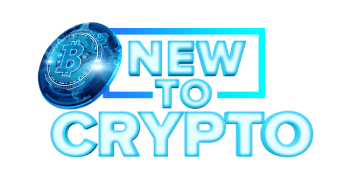
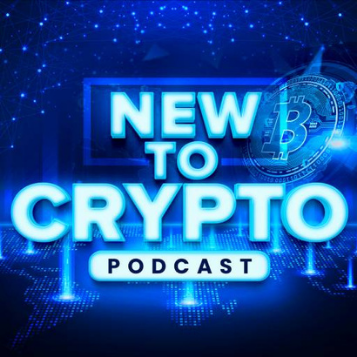






![Raydium The Evolution of DeFi on Solana [Solana Series]](https://newtocrypto.io/wp-content/uploads/2021/12/Raydium-The-Evolution-of-DeFi-on-Solana-Solana-Series-330x310.jpg)

![What is ZooCoin on the Fantom Network [Fantom Series]](https://newtocrypto.io/wp-content/uploads/2021/11/What-is-ZooCoin-on-the-Fantom-Network-Fantom-Series-300x300.jpg)
